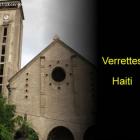Thunderstorm and Lightning Tips
ADVERTISEMENT
When you hear the thunder, lightning is in your area. What causes thunder? When a high voltage lightning flash heats the surrounding air, the air is caused to expand. While it cools the air contacts. This fast expansion and contraction of air creates thunder. Thunder is basically sound waves.
You may not see lightning, but if you hear the sound of thunder it's there. Sometimes the lightning flash may be hidden by thick clouds. A common lightning safety rule states: if you hear it, fear it and if you see it, flee it.
Once you are sure lightning has struck close to your area it's time to seek shelter. Look for a firm building. Don't stand under sheds or small weak buildings; they are never safe. If you must be in a vehicle, let it be one with a metallic roof. During lightning do not touch metallic surfaces.
Stay away from windows and avoid conversations over the telephone. When taking a bath, ensure that you are far from electrical appliances. In very rare cases lightning follow telephone wiring, plumping and/or electrical wires that are inside a building.
The flash-bang method is used to estimate how far or close lightning is. The flash-bang time is the time between the time lightning flash is seen and the time the thunder is heard. Given the speed of light is 186,300 miles per second and that of sound is one mile in five seconds, if the thunder is heard 10 seconds after the lightning flash is seen then the lightning is about two miles away.
The risk of lightning can easily be determined by the flash-to-bang time. As the time grows shorter the riskier it gets. It is recommended that if the flash-bang time is 10 to 15 seconds seek for safer shelter.
Before heading outdoor find out if thunderstorms are forecast. This is the best defense mechanism according to Holle.
Read more: Environment, Environment Tips, Thunder, Thundestorm, Lightning, Energy Environment
« Major Gold, silver and copper mines found in Trou du Nord, Haiti | Main | Health, Medical, and Environmental Risk Factors of Cholera »
Leave a Reply
Name (required) E-mail (required, will not be published)
» »
Our objective is to share with you news and information about Haiti and the people of Haiti. Traditions, habits and the way we were or grew are alive in this site. We highly recommend that you Subscribe to our Newsletter and also share with us some of the things that are memorable and made us unique people.


 Thomassique, Haiti
Thomassique, Haiti  Saint Marc, Haiti
Saint Marc, Haiti  Maissade, Haiti
Maissade, Haiti  Thomonde, Haiti
Thomonde, Haiti  Verrettes, Haiti
Verrettes, Haiti